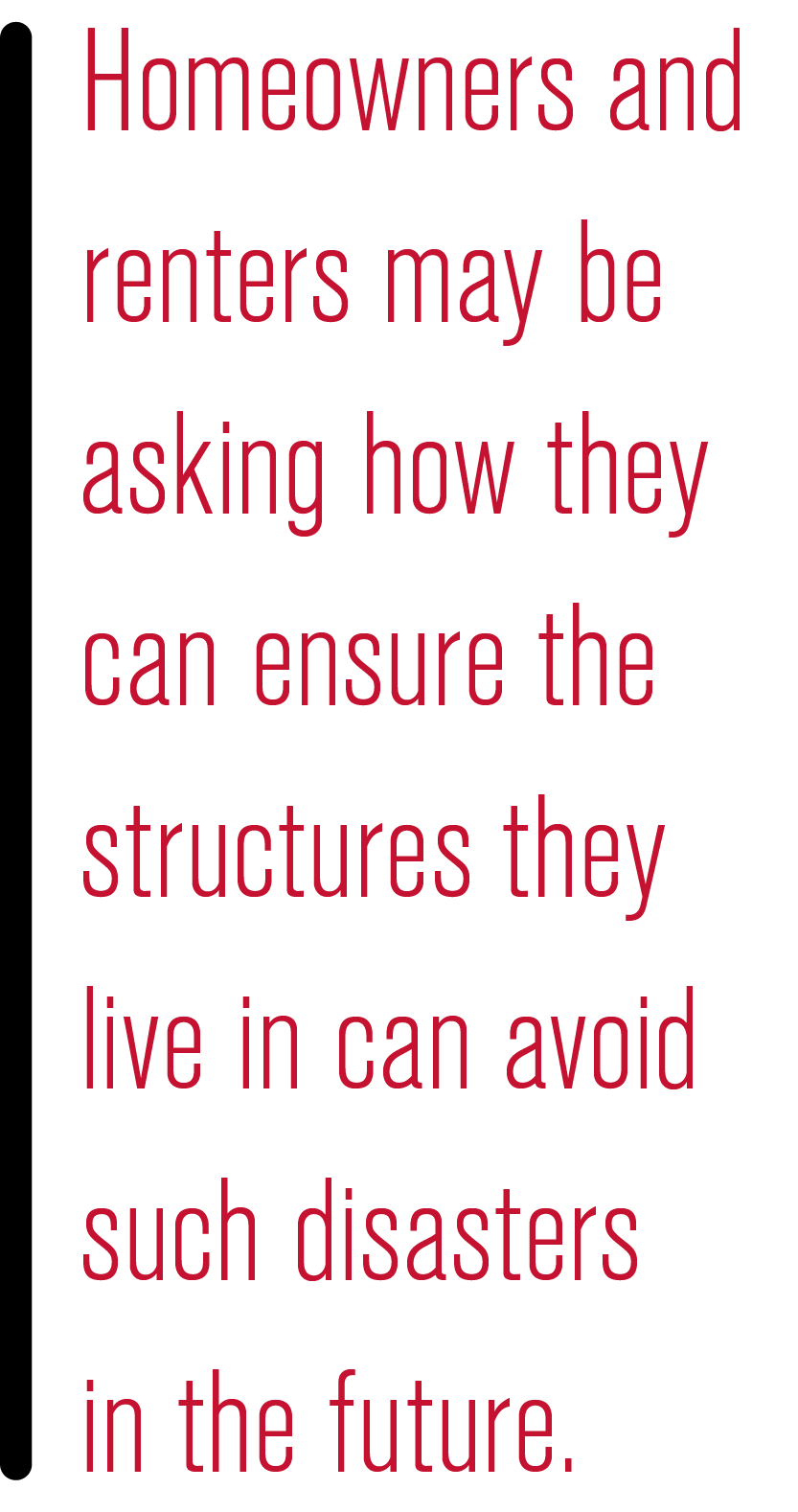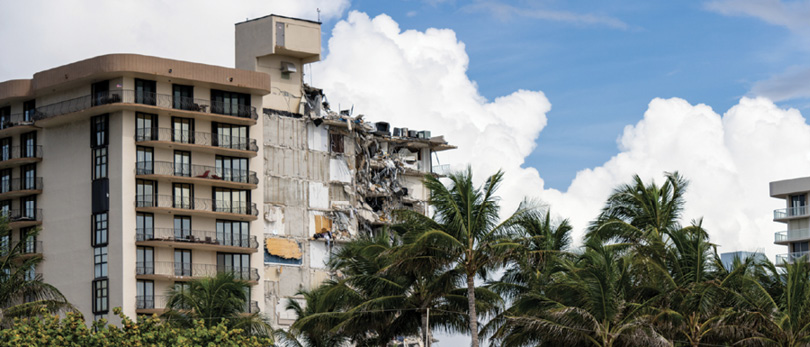By Scott Ford, President of California Builder Services
Disaster struck in the middle of the night on June 24, as Champlain Towers South, a 12-story beachfront condominium in Surfside, Florida, a suburb of Miami, came crumbling to the ground. While a building autopsy will be conducted to identify the cause of the catastrophe and the events leading up to the incident that has tragically left nearly 100 residents dead, the incident has left many condominium associations across the U.S. concerned about the susceptibility of their own buildings succumbing to a similar fate. Additionally, homeowners and renters may be asking how they can ensure the structures they live in can avoid such disasters in the future.
As a REALTOR®, you may be fielding questions from clients looking to purchase condos. Do we know the structure is safe?
While nothing can guarantee the prevention of building collapses, consistent upkeep and proper checks and balances can give homeowner’s associations (HOAs) the best odds of keeping homeowners or tenants as safe as possible.
As the president of California Builder Services, I work closely with the state of California, property owners and condominium associations on analyzing structures around our state and making sure HOAs understand the condition of their structure and shared spaces. Here are ways HOAs can better protect themselves moving forward. Knowing these—and asking questions about the HOAs and reserve funds—will help you prepare your clients to make the best, safest decision when purchasing their next condo.
Stick to a strong building maintenance plan
There are four critical steps in maintaining a condominium building:
- Update the reserve study regularly. In short, a reserve study involves long-term capital budget planning to analyze the health of an existing reserve fund and create a plan moving forward to offset deteriorations or maintenance projects needed, among other atypical expenses. Updating the reserve study allows an HOA’s board of directors to track where and when funds should be allocated, and make sure they have sufficient funds in place (or a plan to raise more funds).
- Ensure the reserves are funded. Ideally, HOAs are properly funded year-over-year and have a plan to keep enough in reserve funds for those unexpected or one-off repairs (fixing a roof or unexpected structural issues found during a reserve study).
If there isn’t enough in the reserve funds, HOAs turn to a special assessment to raise the funds from homeowners to increase the reserve account. While this is not a popular decision, it is often essential to ensure shared spaces are kept up to date and safe for residents. - Spend the reserve funds based on the recommendations in the reserve study. Following one and two, having the funds on-hand makes paying for the repairs and maintenance much easier.
- Conduct periodic infrastructure inspections, looking for any potential structural concerns or general requirements, that the board must follow in accordance with the law. In the state of California, every HOA is required to conduct an on-site inspection and reserve study every three years. A handful of other states, primarily in the western U.S., have some reserve study regulations on the books. The state of Florida currently does not.
 When one or more of these four pillars in the process are neglected or disregarded, issues begin to arise. In the case of Champlain Towers, an April 2021 assessment noted $15 million in repairs and maintenance needed immediate attention. The board approved the assessment, but sadly it was too late. The board did not move quickly enough to correct these deficiencies, even though HOA boards are tasked with maintaining buildings and raising dues to fulfill their obligation. While homeowners don’t want their monthly fees raised, there is a risk that compounds the issues when maintenance is continuously deferred, as we sadly witnessed in Surfside.
When one or more of these four pillars in the process are neglected or disregarded, issues begin to arise. In the case of Champlain Towers, an April 2021 assessment noted $15 million in repairs and maintenance needed immediate attention. The board approved the assessment, but sadly it was too late. The board did not move quickly enough to correct these deficiencies, even though HOA boards are tasked with maintaining buildings and raising dues to fulfill their obligation. While homeowners don’t want their monthly fees raised, there is a risk that compounds the issues when maintenance is continuously deferred, as we sadly witnessed in Surfside.
As a REALTOR®, you need to know as much as you can about the health and funding of reserves. Ask if there have been any special assessments, what the reserve funding level is and about recent maintenance or planned projects. It’s too soon to know if rising sea levels played a role in the collapse at Surfside, but condos on the oceanfront should have healthy reserves, like any other condominium. Let’s look
at what that means.
What went so wrong at Surfside
Upon review, the money in reserve funds at Champlain Towers South accounted for only 6.9% of the fully-funded amount, putting it in the weak range (0%–30% allocated for this classification). For reference, that 6.9% amounted to about $700,000. A healthy HOA should have anywhere from 50%–70% funded in reserves, if not 100%. Champlain Towers should have had 8 to 10 times more in its reserves.
There are three parts of a reserve study: the components where the funds can be allocated, the recommended funding plan based on what needs fixing or replacement and an evaluation of the current strength of the reserve fund. Because there was far too little in reserves and deferred maintenance, the board of directors at Surfside will likely all be held personally liable for not carrying out their fiduciary obligations.
Moving forward
Making sure HOA boards objectively look at maintenance concerns and do what is best for the building is crucial. It can help avoid compounding problems that can lead to disaster. Residents and HOAs should note what the reserve study calls for, and they should make sure that there are sufficient funds available for repairs and other necessary projects. In theory, the collapse of Champlain Towers South was preventable and could have been avoided at many points along the way. However, neglect by the board of directors in the form of compounding deferrals led to the building’s ultimate collapse.
For more on how to assist condo clients, check out the recording 5 Things to Know About Listing and Selling Condos, available at CRS.com/catalogsearch.
Photo: iStock.com/felixmizioznikov








